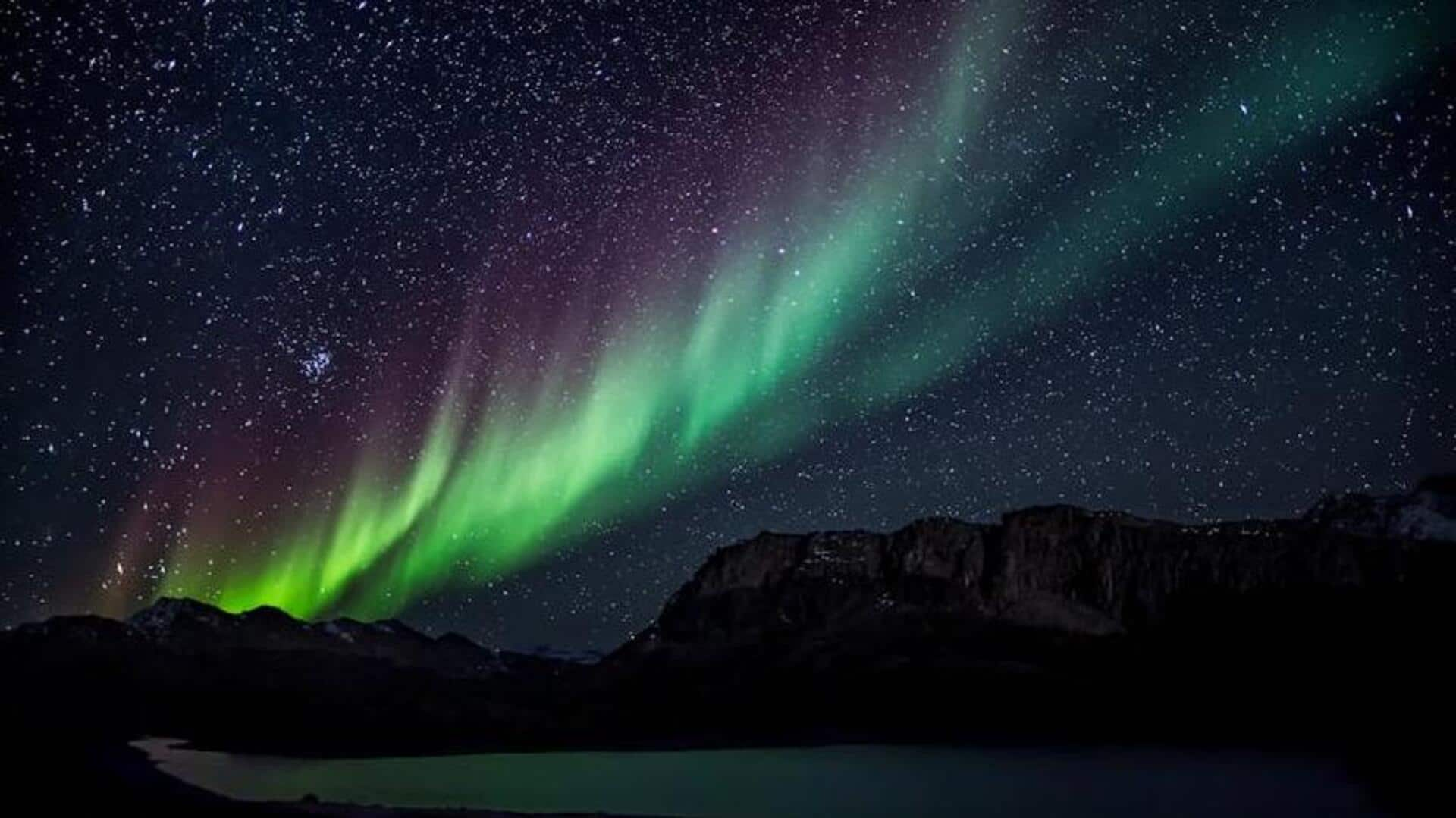
Witness Greenland's northern lights with this travel guide
What's the story
Greenland offers one of the world's most spectacular natural phenomena: the northern lights or aurora borealis. This breathtaking light show is best viewed from September to April, when the nights are darkest. Greenland's pristine environment, free from light pollution, provides an unparalleled viewing experience. The vast, open landscapes serve as a dramatic backdrop for the dancing lights in the sky.
Timing and location
Best time and places for viewing
The optimal period for northern lights in Greenland is from September to April, during cold, clear nights. Prime spots like Kangerlussuaq, Ilulissat, and Nuuk offer the best views, blending accessible facilities with dark skies for vivid displays. Enhancing your experience is possible by planning visits around new moon phases, ensuring the darkest skies for a more dramatic viewing spectacle.
Culture & Experience
Cultural insights and local experiences
Incorporate local culture into your northern lights adventure by staying in small Greenlandic towns or settlements. Engaging with locals can enrich your understanding of Inuit culture and their ancient legends surrounding the aurora borealis. Many communities offer guided tours that combine aurora viewing with traditional activities such as dog sledding or a visit to an ice fjord, providing a holistic Arctic experience.
Photography
Photography tips for capturing the aurora
Capturing the northern lights requires patience and some preparation. Use a DSLR camera with manual settings capability; set your ISO between 800 to 3,200, aperture to f/2.8 (or lower), and shutter speed between 15 seconds to 30 seconds depending on activity level. A sturdy tripod is essential due to long exposure times, and don't forget extra batteries as they drain faster in cold conditions.
Sustainability
Sustainable viewing practices
On your journey to witness nature's marvels, adhere to sustainable tourism. Stick to marked paths during night explorations, maintain a safe distance from local wildlife, and use red-light headlamps to minimize light pollution, which are less disruptive than white light. By being mindful visitors, we help ensure that Greenland's natural wonders remain accessible for future generations to enjoy.